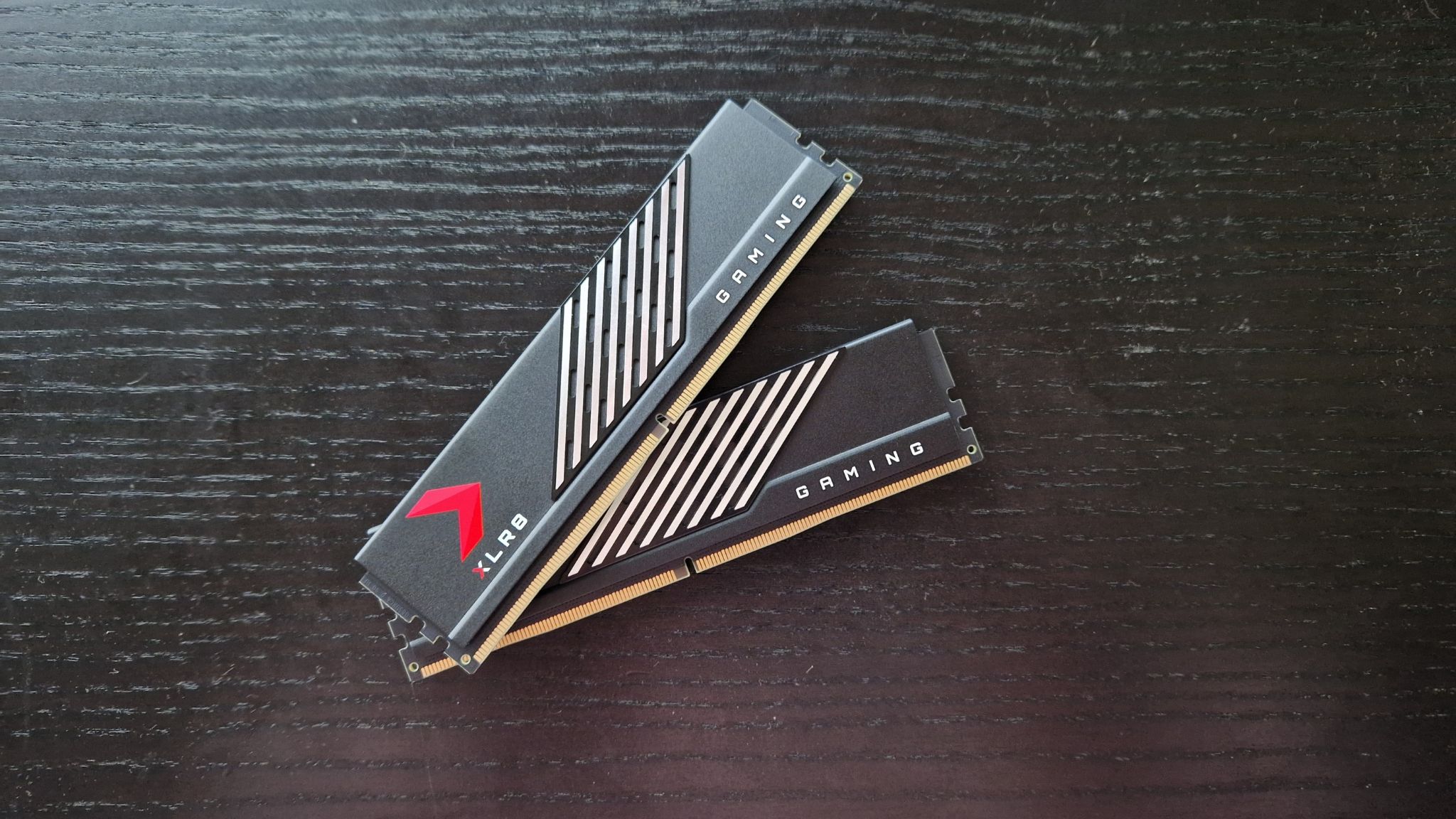GamesRadar+ Verdict
PNY XLR8 DDR5 RAM is a solid option for PC gamers looking for a memory upgrade. It has a sturdy and clever build, great speeds that will enable all the latest-gen components to run smoothly, and it doesn't look bad either. It isn't quite up there with the absolute best DDR5 modules on the market though, and it has a fairly steep price in comparison.
Pros
- +
Excellent DDR5 performance
- +
Sturdy build with substantial heat spreader
- +
RGB and non-RGB options
Cons
- -
Only one XMP profile onboard
- -
Pricey compared to other DDR5 top-performers
Why you can trust GamesRadar+
PNY's XLR8 gaming brand has become synonymous with consistency and quality, and that's exactly what I've found with its MAKO DDR5 RAM modules. As DDR5 continues to push its way into the mainstream, and will only continue to do so in 2023, PNY is re-establishing itself as a top contender in the memory market, whether you want a flashy RGB kit or something a bit more modest for your gaming PC.
We previously reviewed PNY's XLR8 DDR4 RAM, and from my predecessor's write-up, I can see the newer generation is a fitting next step. Similarly to the DDR4 option, there's nothing in particular about these DDR5 modules that will blow you away, but they will absolutely get the job done, and offer DDR5 performance that's just shy of the absolute best RAM for gaming on the market.
PNY XLR8 MAKO DDR5 RAM comes in 16GB and 32GB capacities and is available at both 6000MHz and 6200MHz speeds. For those wanting as much RGB crammed into their PC case as possible, PNY also makes these modules in an RGB version. We tested two non-RGB 16GB 6000MHz sticks which came in one box. For consumers, this adds up to a hefty $189.99.
Design and features
For anyone who has purchased a PNY XLR8 component previously, the MAKO DDR5 modules will be a familiar sight. The brand's classic black hue with red logo highlights is present as ever, and in the middle of the module, there sits the outer side of an aluminium heat spreader which I'm a big fan of. When I reviewed Sabrent's Rocket DDR5 RAM, I didn't enjoy how flimsy the sticks felt, and how easily I felt the copper heat spreader on them could be peeled back like the wrapper of a Wonka bar. The heat spreader on PNY's XLR8 DDR5 feels much more substantial, and its shark-fin placement in the middle of the module makes the entire component feel really sturdy during installation.
Wait a minute - MAKO is a type of shortfin Shark... You don't think... No, it couldn't be.
Joking aside, I really like the look of these DDR5 modules. Although the RGB versions look as flashy as you'd expect, I think there's something to be said for subtler RAM sticks with a more down-to-earth design. PNY threads the needle between distinguishable branding and a subtler look, and that's to be applauded. What's even better, is that they allow for both types of buyers. If you want more RGB in your case, you have the option here, and having that choice at checkout isn't all too common.
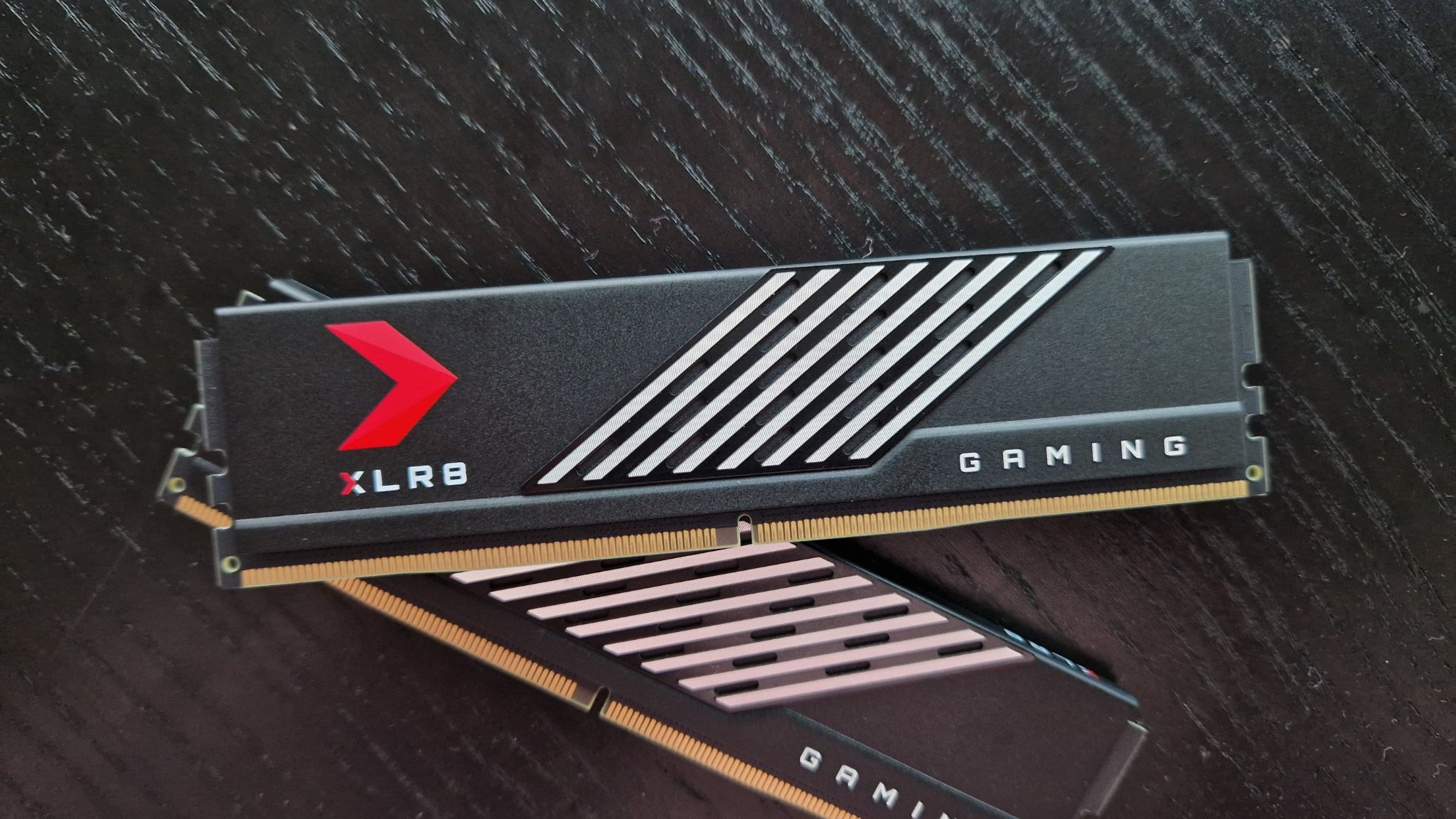
The XLR8 DDR5 sticks are 18.69 x 12.8 x 2.01 cm, and weigh in at 132g. In terms of features, they have everything you'd expect in a DDR5 module. There's PMIC (power management integrated circuits) that helps to keep things efficient, temperature sensor ICs, and all the clever architecture that goes into memory that's this fast. To get a bit more technical, you'll find SK Hynix H5CG48MEBDX014 ICs onboard, and Richtek's "0D=8J 20H" PMIC for voltage regulation.
Weekly digests, tales from the communities you love, and more
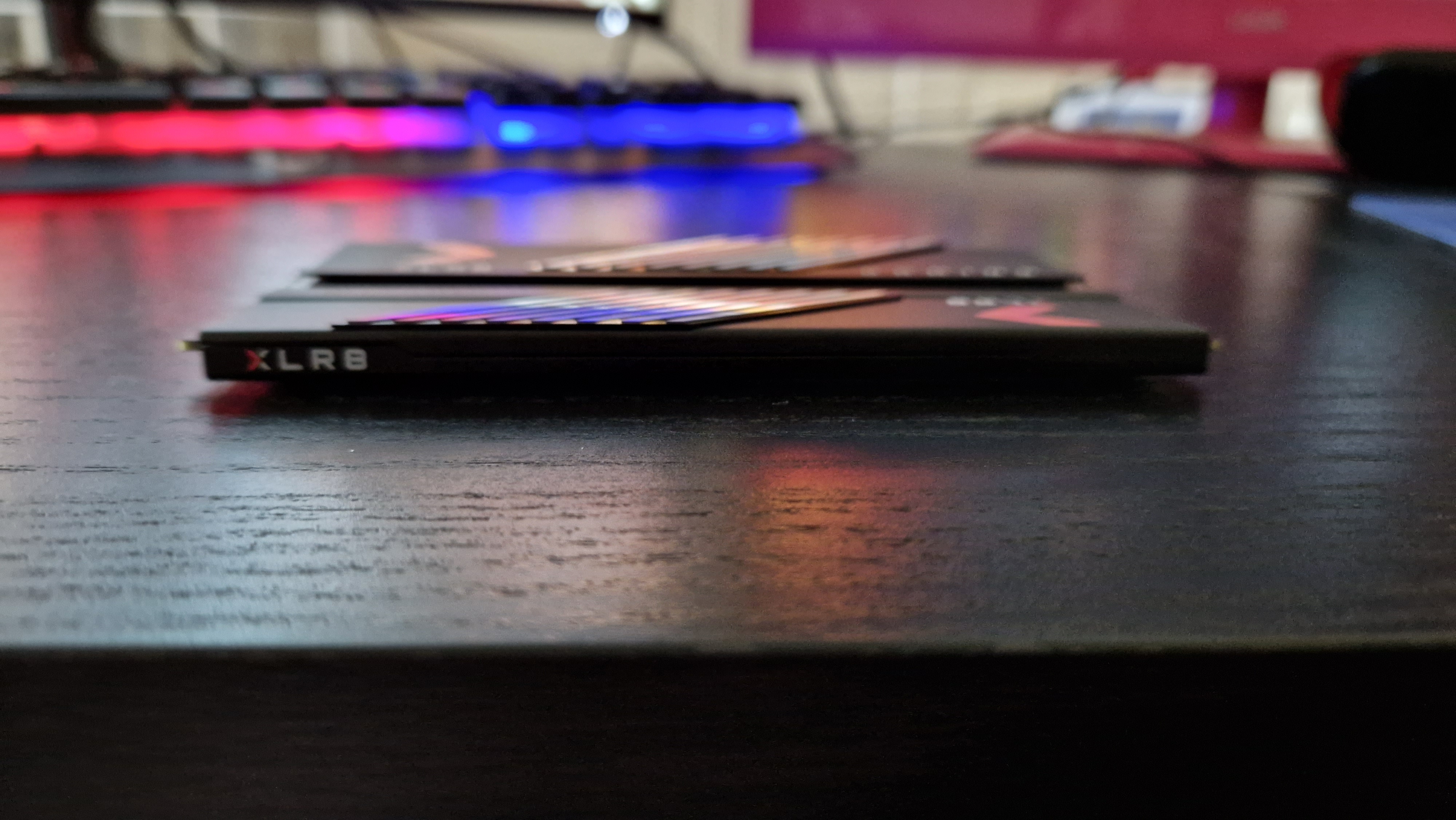
PNY lists the XLR8 DDR5 modules as fully XMP 3.0 compatible, and while I certainly found that to be the case, I was a bit surprised to only see one XMP profile listed in our testing rig's BIOS when I tried to footer about with speed settings. This is a catch-all profile that allows for speeds of up to 6000MHz, but I'd have liked a few more profiles to give folks with older CPUs a bit more peace of mind. No one wants to go creating individual profiles if they can help it, and having more XMP profiles onboard can be a huge help to people that aren't all that confident in overclocking.
Performance
As I mentioned up top, we were sent the 6000MHz model of PNY's XLR8 MAKO DDR5. Remember, particularly with DDR5 RAM, the quoted speed you see on the box won't be what you get when you initially slot it into your motherboard. This is always for safety, in case the rest of your rig isn't set up to tackle that kind of power.
Nonetheless, a quick trip into your BIOS to access settings and change speeds manually should do the trick. Our testing rig has an i7-12700K CPU, and Gigabyte Z690 Gaming X motherboard that supports XMP 3.0 and beyond 6000MHz memory speeds. Our motherboard is all good and well, but the 12700K CPU we currently have (we're waiting on some 13th Gen Intel CPUs arriving for review purposes) isn't the hottest. Although I managed to boost the memory's clock speed beyond 5000MHz, I did get a failed boot when I tried to boost up to the quoted 6000MHz. I expected this to be the case, but it's worth mentioning before we get into the nitty gritty of performance.
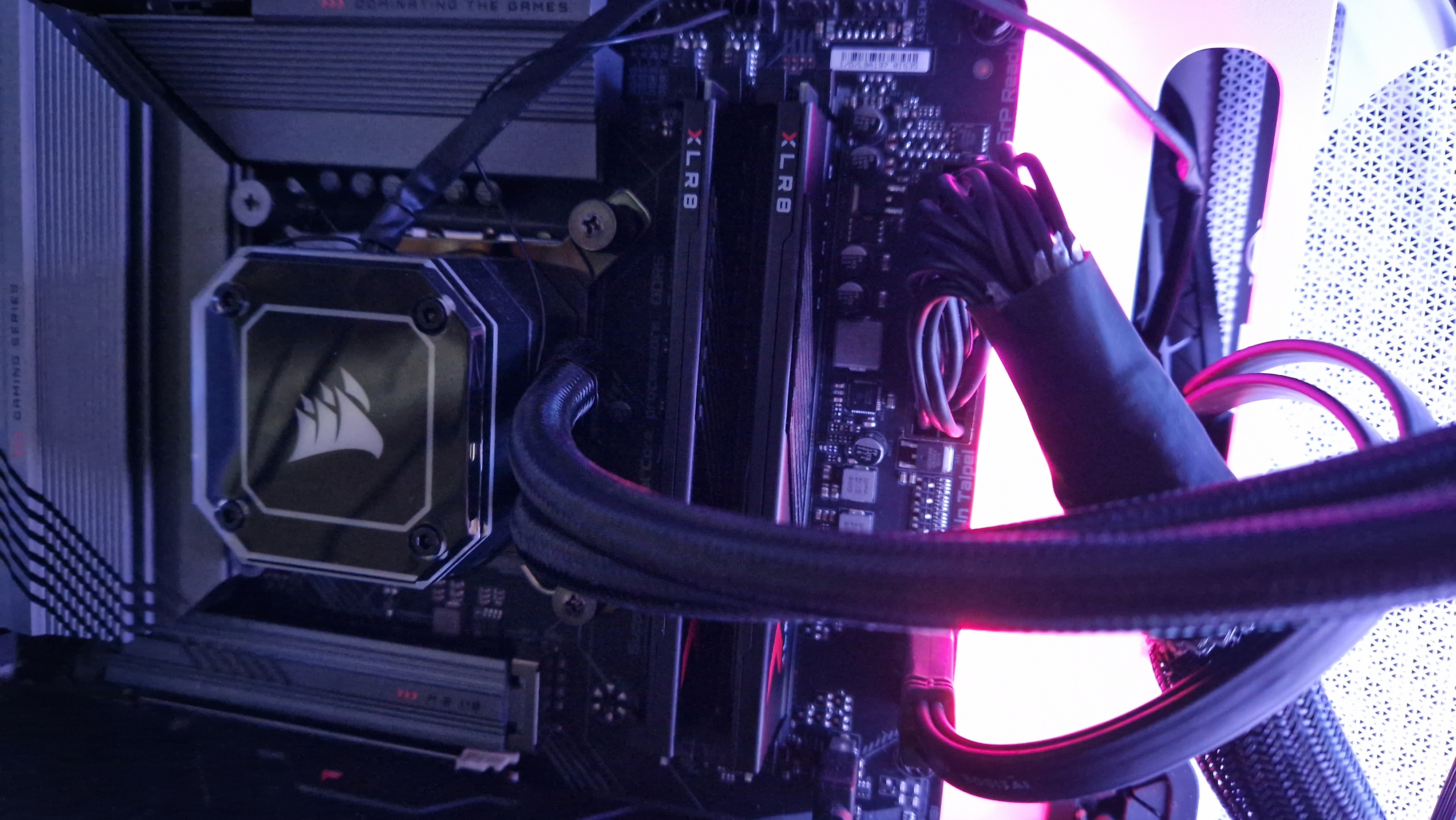
I was tempted to wait until we had more powerful 13th Gen CPUs to play with before publishing this review, but in actuality, I think this was a good way to test out PNY's DDR5, as it probably reflects the type of configuration quite a lot of buyers might have. Our testing rig, which is no slouch by any means, has a CPU that isn't even that old yet. Yes, it's technically last-gen, but plenty of people's gaming PCs are still housing 11th Gen processors or older. If nothing else, this failed boot, and subsequent CMOS reset did drive home the fact that DDR5 is still a highly futureproofed step that most consumers need to work for if they want it. For many, it means buying a new motherboard, then a new CPU, and then getting the RAM to support things.
I say all of this because I have full faith that PNY's XLR8 DDR5 can get its on-the-box speeds without an ounce of trouble. For those in our situation with a DDR5 motherboard but a bottlenecked CPU, you're definitely getting a futureproofed performer in PNY's DDR5. Having said that, it's a pricey option compared to modules that get even higher speeds, so it's tougher to recommend. In my eyes, for lower-end DDR5 rigs (if there is such a thing), it'd be hard to beat the overclocking capabilities of Sabrent's Rocket DDR5.
Luckily, the XLR8's catch-all XMP profile does leave things open-ended, meaning if you can push up to 6000MHz, it's more than possible. If you can't reach that speed, it can underclock to 4800MHz. I clocked back to 5000MHz for testing since this felt like a safe middle ground. In terms of primary speeds, CPU-Z told me the following at 5000MHz: 36-36-36-76, running at a voltage of 1.9V.
I always like to try and put these things in practical terms for gamers. Ie, what difference will PNY XLR8 DDR5 make to your in-game performance? Well, for testing Sabrent's DDR5 rocket science, I used an entry-level GPU in the form of an RTX 3050 and assessed how it aided in-game frame rates. For this review, I used the same games, running at full and quad HD (medium settings), with the same GPU to see how the RAM took the strain off of the rest of the rig's components. Keep in mind that both RAM kits in this test were running at 5000MHz. I found the following:
| Row 0 - Cell 0 | Sabrent: 1080p | PNY XLR8: 1080p | Sabrent: 1440p | PNY XLR8: 1440p |
| Hunt: Showdown | 110 fps | 115 | 90 fps | 100 |
| Apex Legends | 144 fps | 145 | 124 fps | 144 |
| Metro Exodus | 151 fps | 155 | 100 fps | 110 |
As you can see, particularly at 1440p, PNY's XLR8 MAKO DDR5 helped the rest of the system to boost the frame rates of all three games. I'd further note that these frame rates were more consistent with PNY's DDR5, as even with XMP enabled up to 5000MHz with Sabrent's sticks, the fps would definitely fluctuate more.
What you have with PNY's kit then, is a really reliable DDR5 option that will unquestionably help a lower-end DDR5 rig, and will be more than capable of reaching blistering DDR5 speeds with one of the best CPUs for gaming.
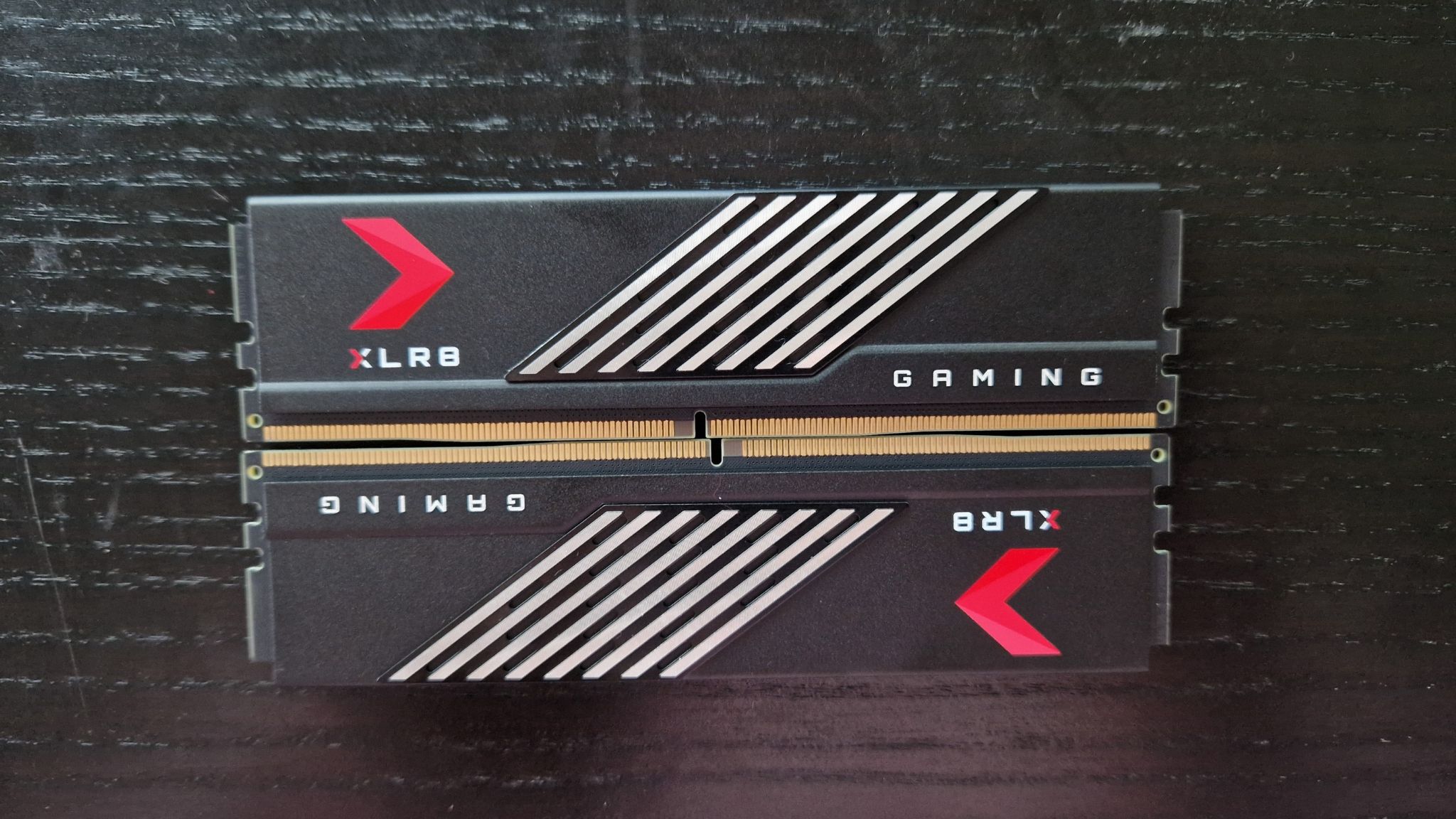
Overall - should you buy PNY XLR8 DDR5 RAM?
I'd argue that if you have a DDR5-compatible motherboard and a CPU that will allow you to get the most out of this RAM kit, then it's a solid option. The 6200MHz version we didn't test will definitely be up there with the top Corsair Dominator Platinum speeds, although we can't say for certain. I'd suggest if you want the absolute best RAM money can buy, go for something like Corsair's kit that boasts speeds above 6200MHz. PNY's XLR8 DDR5 is a great middle-of-the-road option that takes the speeds I saw in Sabrent's Rocket and bolsters it to the next level. Having said that, the MAKO isn't the cheapest option out there.
If you have an aging processor, this is still an easy recommendation. Just keep in mind that until you upgrade to a more efficient CPU you'll probably not get the quoted speeds on the box.
Regardless, PNY's XLR8 DDR5 is a safe option with design choices that deserve a lot of praise.
How we tested PNY XLR8 DDR5 RAM
PNY's XLR8 DDR5 RAM has been our testing PC's memory for the past month. In that time, I tested it in a variety of general use and gaming scenarios. I'm currently testing out AMD's Radeon 7900XTX GPU, and even with a 12th Gen Intel i7-12700K CPU, PNY's DDR5 has never failed to keep up.
For testing game performance and frame rates, I used an RTX 3050 GPU in three games at 1080p and 1440p. To test the various clock speeds of the RAM, I played around with settings and XMP profiles in the PC's BIOS. For primary speeds and voltages, I used CPU-Z and Windows 11 task manager.
To read more about our holistic approach to testing the latest gaming technology, check out our hardware policy.
Need a different component upgrade? Take a look at the best GPUs for gaming, the best SSDs for gaming, or the best PC cases.
One of my earliest memories is playing SuperMario64 and wondering why the controller I held had three grips, but I only had two hands. Ever since I've been in love with video games and their technology. After graduating from Edinburgh Napier University with a degree in Journalism, I contributed to the Scottish Games Network and completed an Editorial Internship at Expert Reviews. Over the last decade, I’ve been managing my own YouTube channel about my love of games too. These days, I'm one of the resident hardware nerds at GamesRadar+, and I take the lead on our coverage of gaming PCs, VR, controllers, gaming chairs, and content creation gear. Now, I better stop myself here before I get talking about my favourite games like HUNT: Showdown, Dishonored, and Towerfall Ascension.
